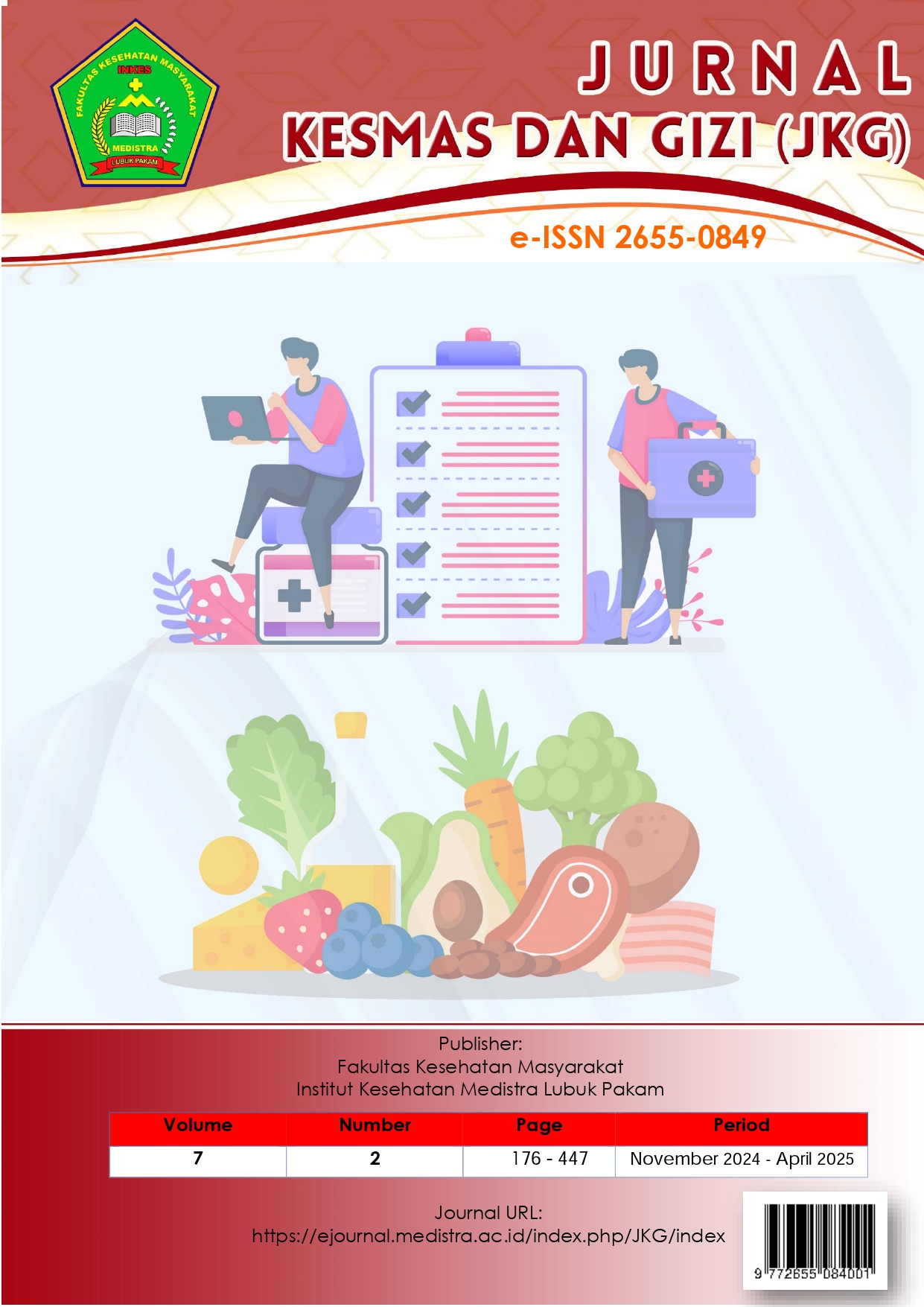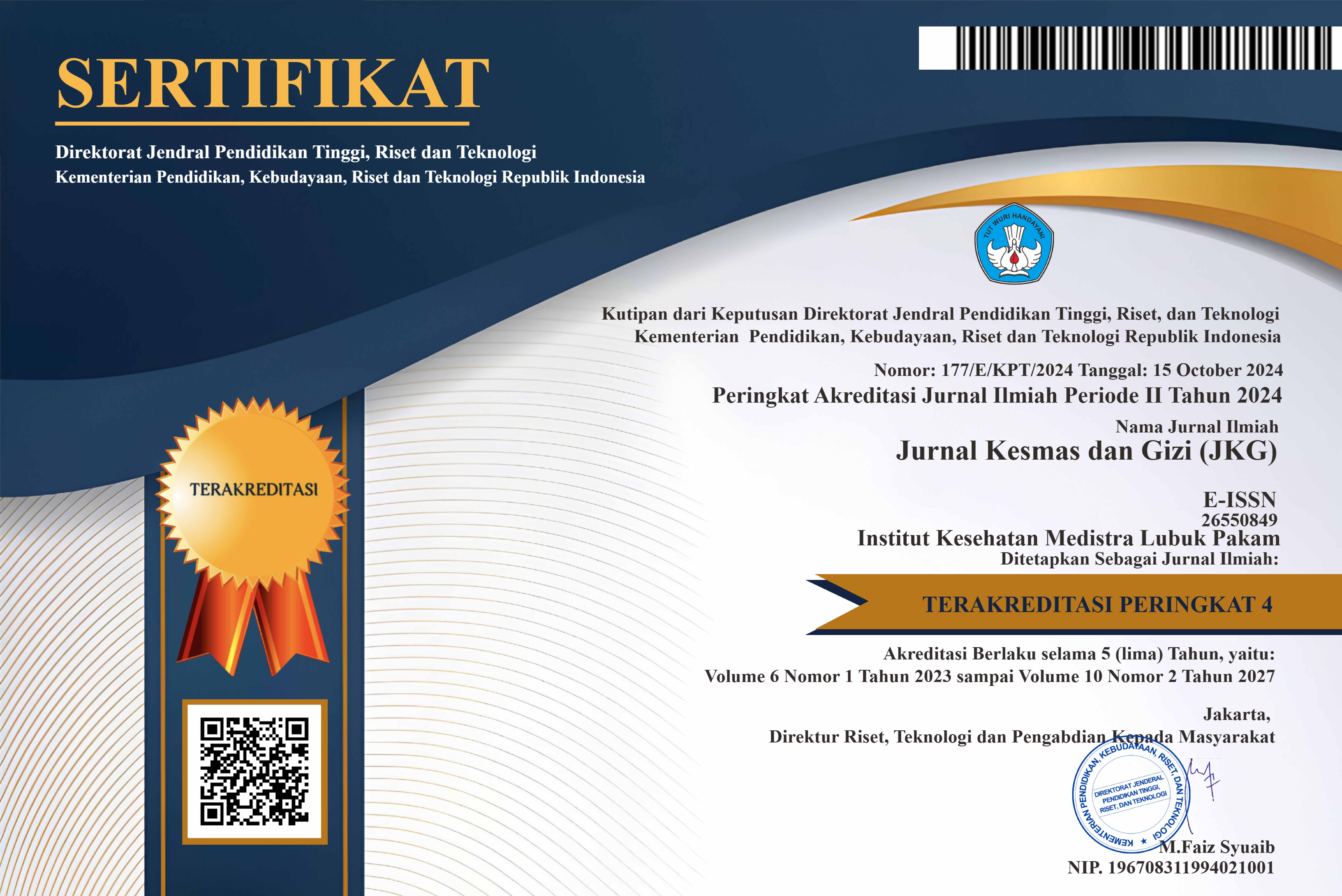Factors Inhibiting Incident Reportin Patient Safety
DOI:
https://doi.org/10.35451/jkg.v7i2.2698Keywords:
Patient Safety, Reporting System, Inpatient CareAbstract
Background: RSUD dr. H. Kumpulan Pane (RSKP) has not yet successfully implemented real-time incident reporting as stipulated by the Minister of Health Regulation No. 11 of 2017. Objectives: Based on this situation, this study aims to analyze the condition of the patient safety incident reporting system in the inpatient unit at RSKP, identify the inhibiting factors, and propose priority policy alternatives to improve the system. Research method: To achieve these objectives, the Grounded Theory method, emphasizing qualitative data analysis from informants including structural officials, healthcare workers, and the quality and patient safety committee at RSKP, was used to reveal the conditions and inhibiting factors of patient safety incident reporting in the inpatient unit at RSKP. Meanwhile, to obtain priority alternatives for improving the incident reporting conditions, the researcher used the Analytical Hierarchy Process method. Results: The results of the study indicate several weaknesses in the reporting conditions, including very minimal incident reporting actions, incomplete implementation of system-oriented approaches, lack of coordination regarding assurance of immunity from punishment for incident reporting actions, unguaranteed independence from external parties, and partial patterns of patient safety incident resolution. Conclusion: Patient safety incident reporting in the inpatient unit of RSKP remains suboptimal due to a weak reporting culture, insufficient training, unsupportive leadership, and an underdeveloped system. Strategic actions such as timely disbursement of service incentives, the establishment of a dedicated SPO improvement team, and the implementation of proportional sanctions are essential to enhance the overall quality of incident reporting.
Downloads
References
WHO. (2021). Global Patient Safety Action Plan 2021–2030: Towards Eliminating Avoidable Harm in Health Care. Geneva: World Health Organization.
. Klazinga, N. & Slawomirski, L. (2023). The Economics of Patient Safety. OECD Health Working Papers.
. WHO. (2021). Patient Safety Incident Reporting and Learning Systems: Technical Report and Guidance. Geneva: World Health Organization.
. Kementerian Kesehatan RI. (2017). Peraturan Menteri Kesehatan Republik Indonesia Nomor 11 Tahun 2017 tentang Keselamatan Pasien. Jakarta: Kemenkes RI.
. Dhamanti, I., Leggat, S., Barraclough, S., & Tjahjono, B. (2019). “Culture of patient safety in hospitals in Indonesia: A systematic review.” International Journal of Health Planning and Management, 34(3), e1371–e1386.
. Pramesona, B. A., Sukohar, A., Taneepanichskul, S., & Rasyid, R. (2023). “Factors influencing underreporting of patient safety incidents among nurses in Indonesia.” BMC Nursing, 22(1), 115.
. Dhamanti, I., Leggat, S., Barraclough, S., & Rachman, A. (2022). “Patient safety incident reporting in Indonesia: Challenges and policy opportunities.” Health Policy and Planning, 37(4), 499–507.
. Tristantia, R. (2018). Analisis Faktor yang Berhubungan dengan Pelaporan Insiden Keselamatan Pasien di Rumah Sakit. Yogyakarta: UGM Press.
. Kementerian Kesehatan RI. (2023). Laman Mutu Fasyankes - Monitoring IKP RSUD dr. H. Kumpulan Pane. Diakses dari: https://mutufasyankes.kemkes.go.id/ikp_rs/monitoring_status
. Faridah, A., Setyowati, Lestari, Y., & Hariyati, R. T. S. (2021). “Analysis of nurse’s perception about patient safety culture in Indonesia: A scoping review.” Journal of Patient Safety, 17(2), e120–e128.
. Hwang, J. I., Lee, S. I., & Park, H. A. (2012). “Barriers to the operation of patient safety incident reporting systems in Korean general hospitals.” Healthcare Informatics Research, 18(4), 279–286.
. Vincent, C., & Amalberti, R. (2016). Safer Healthcare: Strategies for the Real World. Springer Open.
. Vincent, C., Neale, G., & Woloshynowych, M. (2010). Adverse events in British hospitals: preliminary retrospective record review. BMJ, 322(7285), 517–519.
. Tristantia, A. D. (2018). The Evaluation of Patient Safety Incident Reporting System at a Hospital. Jurnal Administrasi Kesehatan Indonesia, 6(2), 83–94.
Lee, W., Kim, J., & Lee, S. (2020). The effect of monetary incentives on patient safety behavior in hospitals. International Journal for Quality in Health Care, 32(7), 485–491.
Vincent, C. (2010). Patient Safety. 2nd ed. Wiley-Blackwell.
. Chegini, Z., Kakemam, E., Asghari Jafarabadi, M., & Janati, A. (2020). The impact of patient safety culture and the leader coaching behaviour of nurses on the intention to report errors: A cross-sectional survey. BMC Nursing, 19, 89.
. Collier, S. L., Fitzpatrick, J. J., Siedlecki, S. L., & Dolansky, M. A. (2016). Employee Engagement and a Culture of Safety in the Intensive Care Unit. JONA: The Journal of Nursing Administration, 46(1), 49–54.
. Kessler, O. (2014). Leadership, safety culture and patient safety in hospitals: In search of evidence. BMC Health Services Research, 14(Suppl 2), P64.
. Scott, G., Hogden, A., Taylor, R., & Mauldon, E. (2022). Exploring the impact of employee engagement and patient safety. International Journal for Quality in Health Care, 34(3), mzac059.
Dhamanti, I., Leggat, S., Barraclough, S., & Rachman, T. (2022). Factors contributing to under-reporting of patient safety incidents in Indonesia: leaders’ perspectives. F1000Research, 11:519.
WHO. (2019). Patient safety incident reporting and learning systems: technical report and guidance. Geneva: World Health Organization
Downloads
Published
Issue
Section
License
Copyright (c) 2025 Ahmad Fauzan, Felix Kasim, Rahmad Ramadhan Ritonga

This work is licensed under a Creative Commons Attribution 4.0 International License.
Copyright in each article is the property of the Author.


























